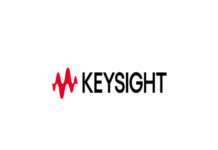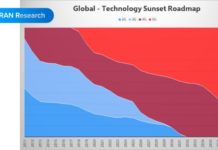
Extended reality (XR) which encompasses augmented reality (AR), virtual reality (VR) and mixed reality (MR) has enormous potential to deliver immersive experiences of the future and transform both industry and community.
5G delivers incredible speed and such connectivity is poised to bring significant benefits to extended reality. However, in addition to speed, low latency is crucial to ensure that applications are usable and interactive, whether it is human-to-machine or machine-to-machine communication. In today’s dynamic and disparate environment, delivery of XR on a large scale will consist of high performance compute, ultra-low latency communication networks and a robust end-to-end security framework. 5G coupled with hyperscale data centers and edge-cloud deployments would be the big enablers for XR, as they offer ultra-low latencies at higher bandwidths. Also, the industry is preparing for the move to 800G to accommodate the expansion of 5G, the growth of 4k and 8k video, and other services that drive demanding performance requirements. XR presents huge opportunity for carriers and by capitalizing on their on-going 5G rollouts, mobile network operators are in an excellent position to enable the realization of XR on a large scale.
Latency is the new speed
As majority of emerging 5G value-adding applications are time critical in nature with demanding requirements on reliable low latency, it is important to see how mobile network operators enable large-scale XR by introducing time-critical communication capabilities in 5G networks. The required latency levels, just like the required level of upload or download bandwidth, depend on the type of application. In gaming, AR, VR and many machine-to-machine controlled applications, the latency requirements are dramatically more stringent than less interactive applications like video playback or download. The time-critical communication capabilities in 5G make it possible to overcome these challenges by offloading XR processing to the mobile network edge.
Latency and gaming experiences are quickly rising in prominence for 5G benchmarking. Moreover, gaming is a well-established indicator of the performance of the service provider’s network. If the gamers are choosing a network, it’s because it’s better. And that performant network is the one that will win subscribers for all next generation applications, from vehicle-to-vehicle applications to augmented reality (AR).
Dealing with complexity
The communication ecosystem is rapidly evolving and network providers are already working on deploying the infrastructure that meets all the needs. Access, edge and core of the networks are being redesigned and deployed. Access networks will have enhanced radio networks to give better subscriber coverage, edge networks will effectively handle higher throughput and the core network all that while will effectively process multi-millions of traffic flows effectively via network slicing.
5G supports diverse, new, and complex use cases such as; Enhanced Mobile Broadband (eMBB), Massive Machine Type Communications (mMTC) and Ultra-Reliable Low Latency Services (uRLLC). Moreover, 5G enables provisioning differentiated or specialised services for diverse users (customers or enterprises across verticals), which have requirements for services that support multiple use cases or applications. For example, new services will need to support applications such as virtual reality, gaming, and immersive reality; mission-critical services such as emergency response; connected autonomous vehicles; billions of IoT devices, and Industry 4.0 initiatives. The requirements for these services also come with high expectations for quality, speed, and reliability; since many of these services are critical for businesses, therefore require stringent SLAs. This means communication service providers (CSPs) must deliver, monitor, and assure not only a continuously increasing number of complex services, but also validate the strict SLAs associated with each of them.
Testing and monitoring
As network equipment vendors, service providers, MSOs and enterprises are all focused on improving agility and operational efficiency, the challenges of 5G can have significant implications on reliability, quality of service, and quality of experience for networks and users.
The ability to proactively test end-to-end services is becoming more crucial in addressing numerous challenges and complexities around new services and their provisioning. To win in the complex world of 5G, network operators and service providers must evaluate themselves through objective and scientific measurement of the user experience. This can be accomplished through a combination of drive, walk, and stationary testing to ensure statistically valid assessment throughout the coverage area. Testing methodology and an impartial analysis uses proven, scientific methods to measure voice, video, data, gaming quality and performance, and highly customized to the needs, from assessment of specific, specialized 5G services to broad, nationwide user experience evaluation.
5G’s open and disaggregated architecture promotes true multivendor interoperability and diversity. There are fundamental changes in how new services, such as; MEC, SD-WAN, SASE and O-RAN are being developed, deployed and optimized for market consumption. An end-to-end testing and assurance, from a user device through to the core network across all layers (physical, transport, network, service) becomes highly imperative. As communication service providers are moving quickly to embrace XR as a differentiator, while balancing new demands associated with managing and monitoring 5G’s dynamic network and services; automation, assurance and services-based resources are the drivers that will help them build attractive solutions with the right partners. Service providers (SPs) need unbiased and industry-recognized test solutions to validate their mobile network’s performance, since a proven industry expertise maximizes network operators solution capabilities and ensures they deliver their services to market on time and with optimal quality.

Senior Business Development Manager – APAC South,
Spirent Communications
Given the complexity of 5G, achieving mobile network performance benchmarking is a complex requirement. SPs are turning to expert partners to perform this function on their behalf. To navigate this new terrain and remain competitive, working with a pioneer in testing mobile QoE under real-world conditions, with recognized leadership in 5G testing and validation and extensive experience with new and existing mobile technologies is essential. The ability to utilize and embrace validated test methodologies will ensure success.


















